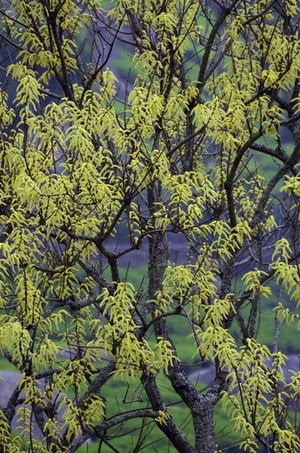Note: This is a project under development. The articles on this wiki are just being initiated and broadly incomplete. You can Help creating new pages.
Difference between revisions of "Salix tetrasperma - Jalavetasa"
(Created page with "thumb|right|''Jalavetasa'', ''Salix tetrasperma'', ''Indian willow'' Jalavetasa, commonly called Indian willow, is a medium-sized tree of wet a...") |
|||
| Line 10: | Line 10: | ||
The bark of Indian Willow is used to treat fever. | The bark of Indian Willow is used to treat fever. | ||
| + | |||
| + | == External Links == | ||
| + | |||
| + | *[https://en.wikipedia.org/wiki/Salix_tetrasperma Salix tetrasperma-Wikipedia] | ||
[[Category:Herbs]] | [[Category:Herbs]] | ||
Revision as of 14:32, 2 January 2017
Jalavetasa, commonly called Indian willow, is a medium-sized tree of wet and swampy places, shedding its leaves at the end of monsoon season. It flowers after leafing. The bark is rough, with deep, vertical fissures and the young shoots leaves are silky. The leaves are lance-like, or ovate-lancelike, 8–15 cm long, with minutely and regularly toothed margins. The male sweet scented catkins are 5–10 cm long, and are borne on leafy branchlets. The female catkins are 8-12 cm long. The capsules are long, stipulate, in groups of 3 to 4.
It grows in many parts of south and southeastern Asia, including India, Pakistan, Nepal, Laos, and Thailand,.
In Manipur, in NE India, the new flowers of Indian willow, locally known as ঊযুম (ooyum) are eaten, and are considered delicious.
In Maharashtra, this tree is called walunj. It can be found in Pune, Satara, Sangli, and Kolhapur.
The bark of Indian Willow is used to treat fever.
